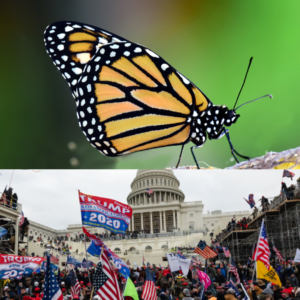Part 7 of a 10-part Series:
The Unholy Alliance Between Socio-economic Elites
and White Christian Nationalism

…the religious right has become more focused and powerful even as it is arguably less representative. It is not a social or cultural movement. It is a political movement, and its ultimate goal is power.”
Katherine Stewart, The Power Worshippers, 2019
Oligarchs, plutocrats, extreme inequality, the dominance of corporations and Wall Street in public life—all are not unexpected results (indeed they were the very purpose) of the Powell memo. Harder to connect is how all of this is related to January 6th, where it looked like a mob of “ordinary” Americans were fed up with a Congress that had lost touch with them. However, in their zeal to keep “the people” disconnected and distracted, the masters of the universe have created a population full of anger, angst, alienation, and anomie. Religion can fill the void of belongingness in such a system, and it can also be co-opted into the war against the people.
Anyone who has watched video footage from January 6th can see that Christian iconography was everywhere. Certainly, there were plenty of regular American flags and Trump regalia. There were also symbols that many of us would consider “un-American,” including Confederate flags and Nazi symbolism. But even more jarring was the juxtaposition of white supremacy and nationalist hate groups (Proud Boys, Oath Keepers, III Percenters) with Christian themes: crosses, ichthys (the Jesus fish), along with Jesus-themed flags (“Jesus is my Lord, Trump is my President,” “Make America Godly Again,” “GOD GUNS TRUMP”) and even a picture of a white Jesus wearing a red MAGA hat—images which many Christians find blasphemous (this writer included).